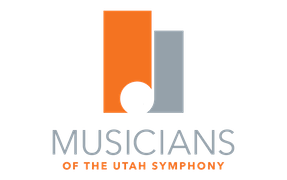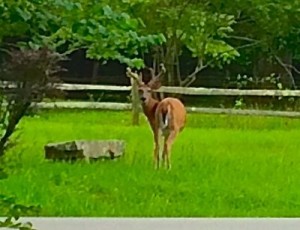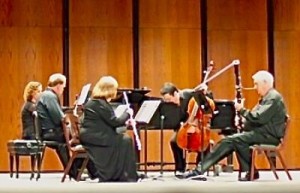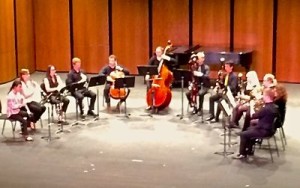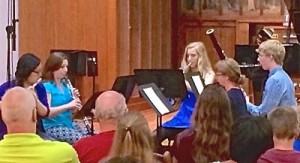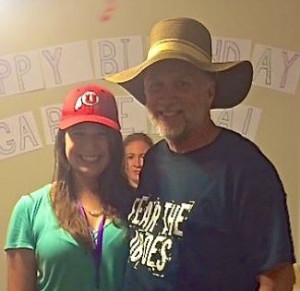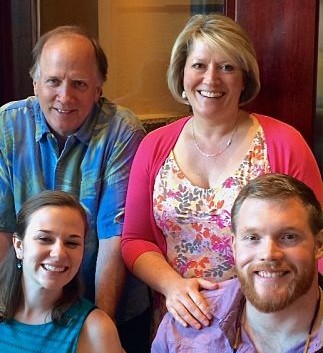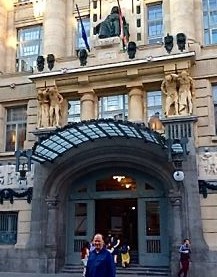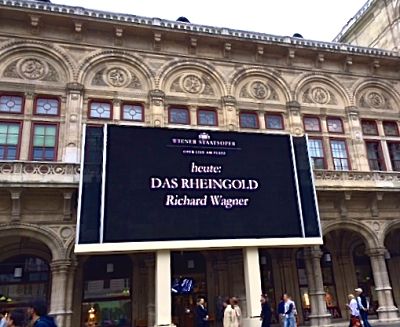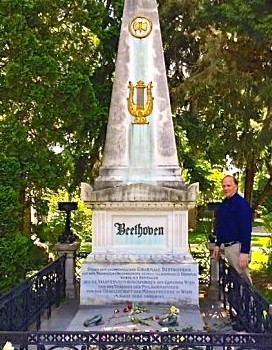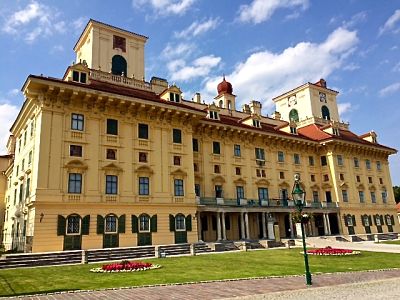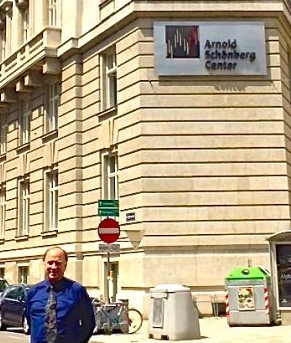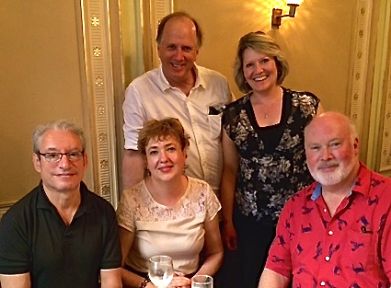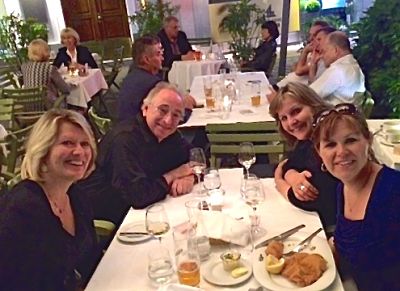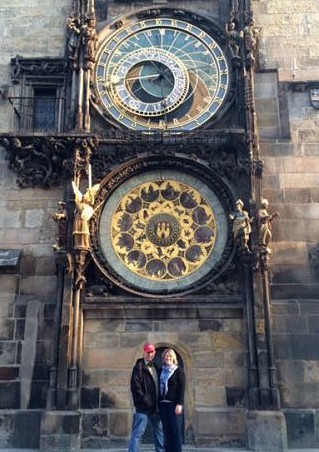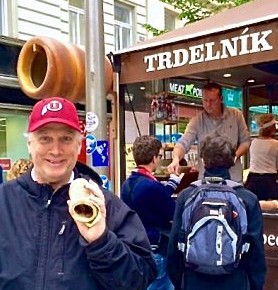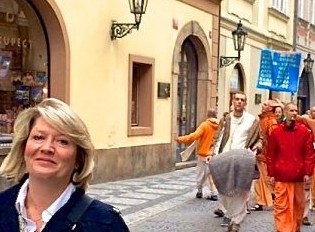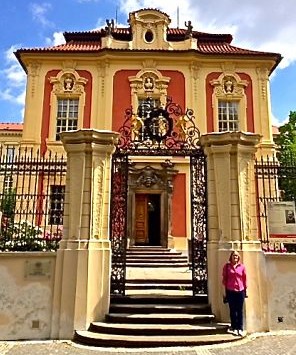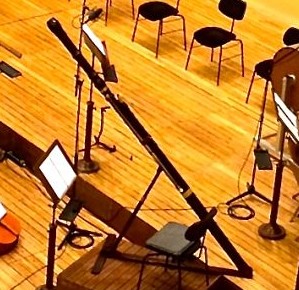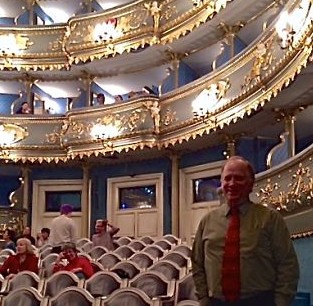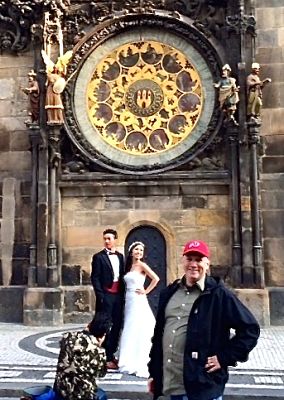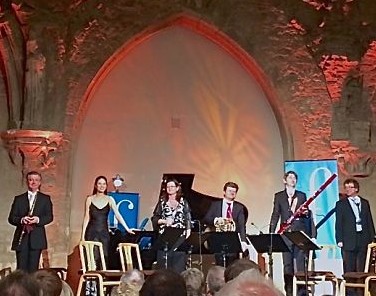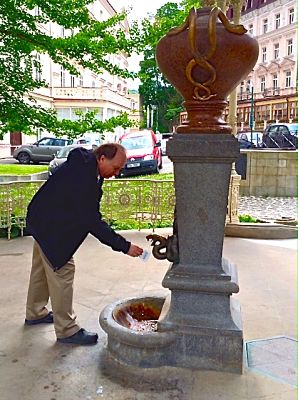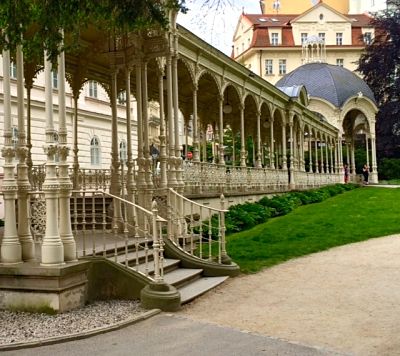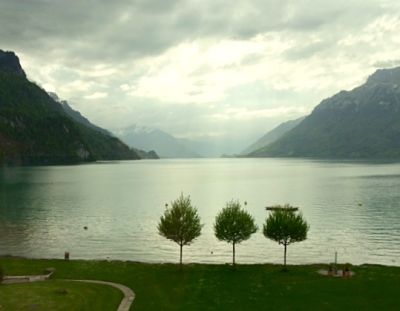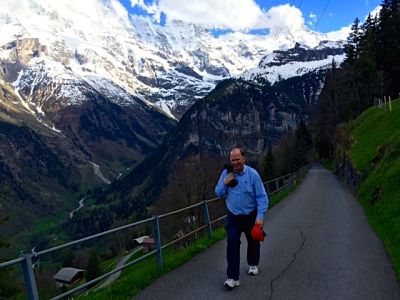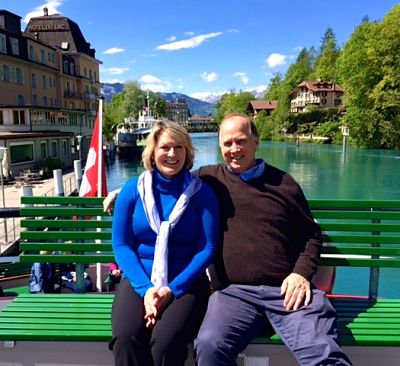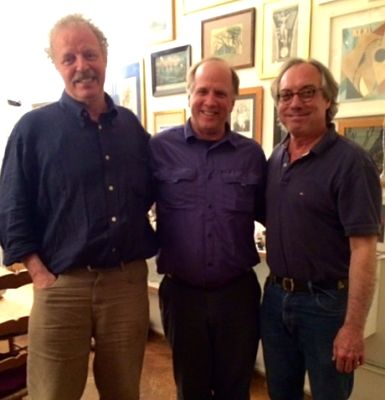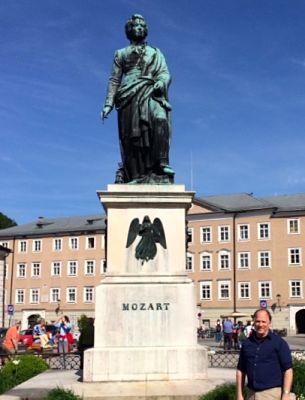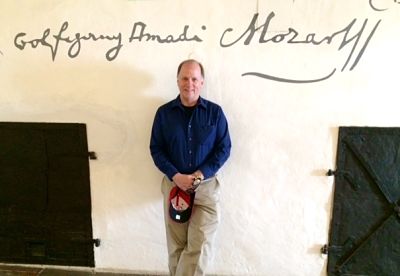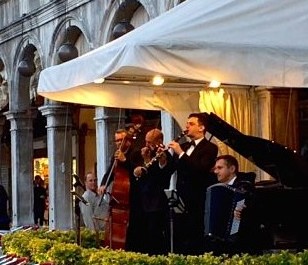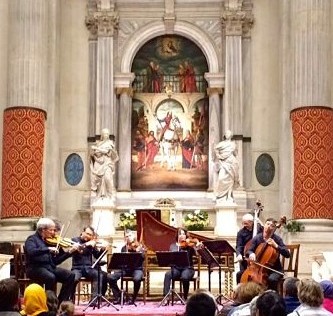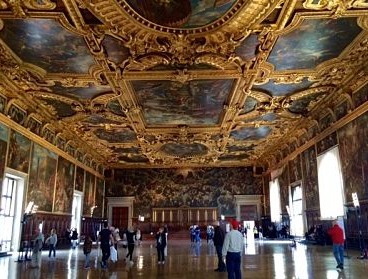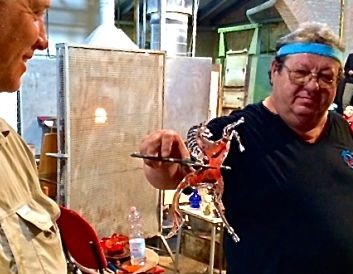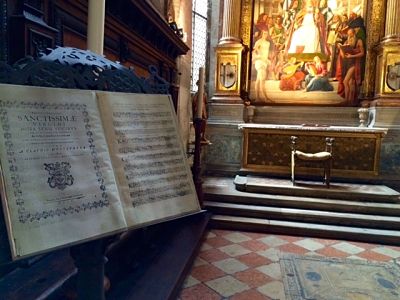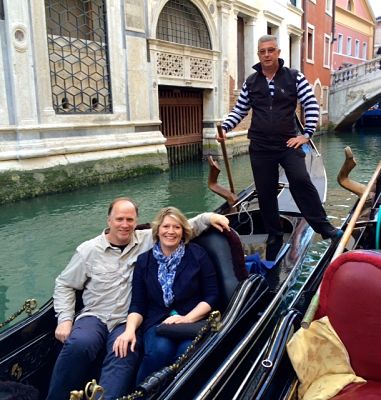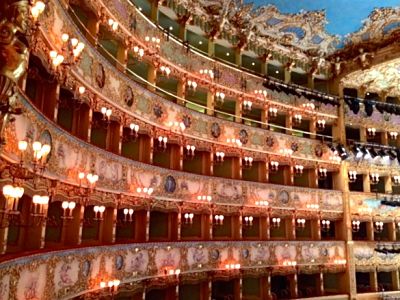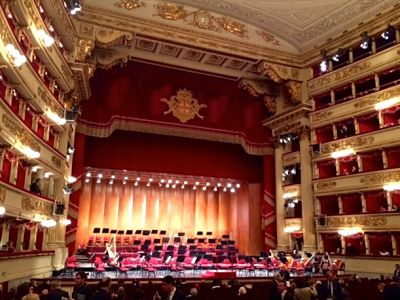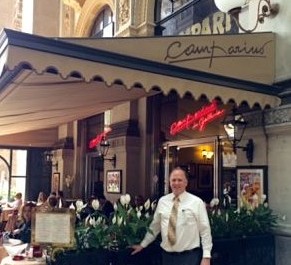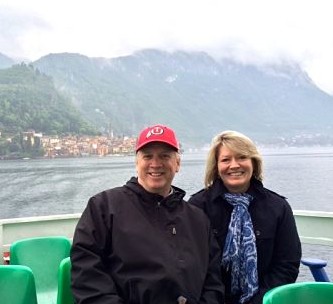Utah and the Southwest
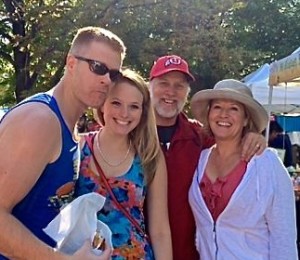
James, Chelsea, Bob and Lisa enjoying the Downtown Farmer’s Market
Having been away for seven of the last eleven months, it felt good to be home in Salt Lake City. Our home had been well cared for by Colleen and Tucker Weathers, the recent newlyweds. We enjoyed seeing our daughter, Chelsea, and her husband James. Chelsea spent time interviewing for a job with the Salt Lake Women’s Clinic and a possible job as an Ob/Gyn. We enjoyed time at the Farmer’s Market and at home. We’ll be crossing our fingers, hoping she’ll return to Utah following her residency in Columbus, Ohio.
Being on sabbatical means you can go hear a concert versus performing in one. We took advantage of that opportunity by going to hear the Utah Symphony with Kristin Chenoweth up at Deer Valley. Our seats were high up the hill, but Ms. Chenoweth was in excellent form. Her rendition of “Somewhere Over the Rainbow” was really beautiful and the duet from “Wicked” that she sang with a surprisingly talented audience member was especially memorable. 4,999 other people seemed to agree. Colleen and Tucker shared the blanket and experience with us. It’s fun having a picnic under the stars!
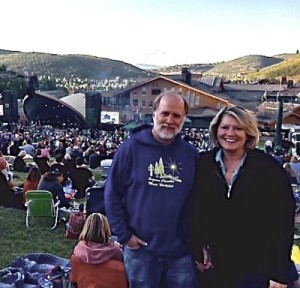
Kristin Chenoweth concert at Deer Valley
We also made it up to Deer Valley to hear the orchestra again, this time with Diana Krall. She and her five-member band were terrific! I loved her version of “Do It Again” and “Let’s Fall in Love”. My violin-playing colleague for the past 35 years, Tom Baron, was playing his final concert with the orchestra. His wife, Carolee, and a visiting Ron Holdman (former timpanist with the Utah Symphony) joined us on the hillside. Diana Krall’s program had both variety and emotion. I also noticed some beautiful oboe playing from Lissa Stolz.
When you are away from home for long periods, the changes you see can be dramatic. New apartments are popping up in several locations, and the Sugarhouse area is now home to many new restaurants and a fancy new movie theater. We went to see “Mission: Impossible – Rogue Nation” in the newly remodeled movie theater. The seats were luxurious and the movie was a lot of fun. One of the scenes involved the Vienna State Opera House where we had seen Wagner’s “Ring Cycle” just three month ago. Tom Cruise helped save the day from an assassin who used a rifle disguised as a bass flute. The security guard should have known what Lisa stated to me, “There’s no bass flute in Turandot!”
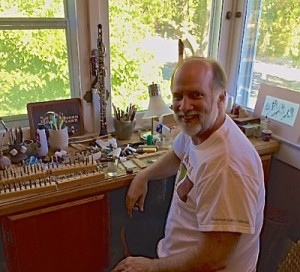
Bob in his studio
Between visits to three major oboe dealers in Los Angeles, Paris and London, I felt motivated to buy a new oboe. Last week, that’s what I did! The same shop in Los Angeles that supplied me with my first instrument 50 years ago, did so again. With a couple of weeks to go before the new orchestra season begins, I’m breaking it in slowly, testing notes with a tuner, making new reeds and running the humidifier. I played the instrument at home, with Lisa, at the University of Utah and on stage at Abravanel Hall. The real test will be when I’m “tooting my own horn” while surrounded by 85 other musicians. That’ll be fun!
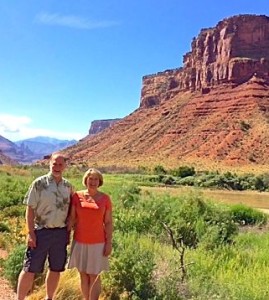
Beautiful Moab
Lisa and I make a yearly trip to Grand Junction, Colorado to have her flutes worked on by an excellent repair person, Sherry Lee. This particular trip included travelling along the scenic byway near Moab and seeing the “Needles Overlook”. It reinforced the idea that Utah is a beautiful state. We enjoyed a nice stay at the Doubletree Hotel and found a delicious Japanese restaurant, Suehiro, on Main Street in Grand Junction.
We continued the drive south to Prescott, Arizona to see my mother. A couple of miles before my mom’s home on Ruth Street we could hear the intermittent roar of cicadas. This chubby insect with translucent wings spends most of its life underground. I’m talking up to 17 years! Their mating call from the surrounding treetops appears carefully orchestrated. One morning I awoke before 7:00am. It was quiet, but already warming up. At exactly 7:03am the first roar of cicadas began. The giant collective crescendo is enough to cause you to cover your ears. A few stragglers hang on at the end of the rising and falling love call before it all begins again. This goes on all day!
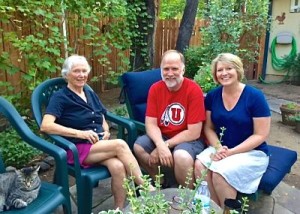
Mary Stephenson, Bob and Lisa in Prescott, AZ
Chris Tarvin, one of my mother’s dearest friends, joined us in the garden for an evening performance of a duet I wrote for ceramic flute and oboe. The working title is “The Call of the Winds”. The outdoor setting is fitting, even with a few hundred cicadas in heat. The ceramic flute was made in Salt Lake City by Leslie Randolph and has a gorgeous sound. It probably helps that Lisa knows how to handle all its earthy eccentricities. We all enjoyed a “friendly” game of pool and catching up on each other’s lives.

Bob, Chris and a Cicada
For an 87-year old woman, my mom is doing pretty well. Her mental faculties are good and all her gardening keeps her especially active. She’s lost a lot of her peripheral vision, which means she has to watch her step, and her hearing may have gone down hill. The following is an exchange she had with Lisa:
Lisa: “So, have you had a lot of cicadas this year?”
Mom: “Oh yes. They’ve done really well.”
Lisa: “More than usual?”
Mom: “Yes. And we’ve enjoyed eating them.”
*silence
Lisa: “Are we talking about the same thing?”
Mom: “I thought you were asking about my potatoes.”
Lisa: “Oh, no. I was asking about the cicadas!”
We took about 12 hours to get back to Salt Lake City. Smoke from wildfires in the western states kept us company for the entire trip. We got back in time for Lisa to hear flute auditions at the University of Utah. It was a long day.
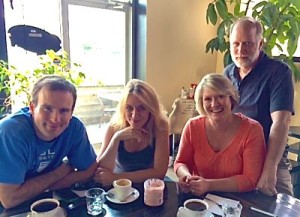
Vladimir, Maja Bogdanovic, Lisa and Bob enjoying coffee at Cafe D’Bolla
On his last day in Salt Lake City we met up with Vladimir Kulenovic and Maja Bogdanovic at Caffe d’Bolla. After conducting hundreds of concerts over a four-year period with the Utah Symphony, “Vlada” is off to Chicago and his Music Director post with the Lake Forest Symphony Orchestra. For the 1200-mile trip he had a very big U-haul truck and a car filled to the top! I noticed a large collection of tuxedoes and tails hanging by the front passenger seat. Maja popped out of the trunk when we met them in the parking lot on 400 South. Lisa enjoyed a very expensive cup of coffee. I had tea. We wished them safe travels.
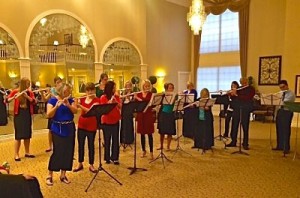
Flute choir performing for April Clayton and Chase Kimball’s wedding
We went to the wedding reception for BYU flute teacher, April Clayton, and her husband, Chase Kimball. Lisa played in a 16-piece flute choir and we met up with old friends, Erich Graf and Ricklen Nobis, two outstanding musicians. Erich played principal flute with the Utah Symphony for more than 30 years and Rick wrote an oboe d’amore concerto for me along with teaching two of my kids the piano. They both looked good. We’ll look to find Erich’s new book chronicling his life in music. April was a happy and beautiful bride.
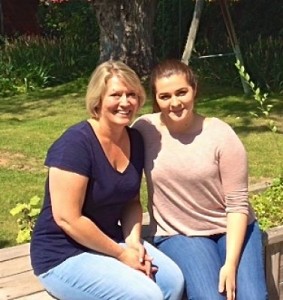
Lisa with student Jacqueline Noel
We had a nice visit with Jackie Noel, former student of Lisa’s and mine. Unfortunately, for the oboe world, Jackie stuck with the flute and is now attending music school at McGill University in Montreal. After lunch, Jackie played for Lisa, revealing improvements in many areas. It’s nice when your students are successful.
The smoke outside may be lessening. Inside, I can hear the sounds of Lisa practicing. We’re still on a musical journey, and it’s time to continue breaking in a new oboe.
– Robert Stephenson and Lisa Byrnes
